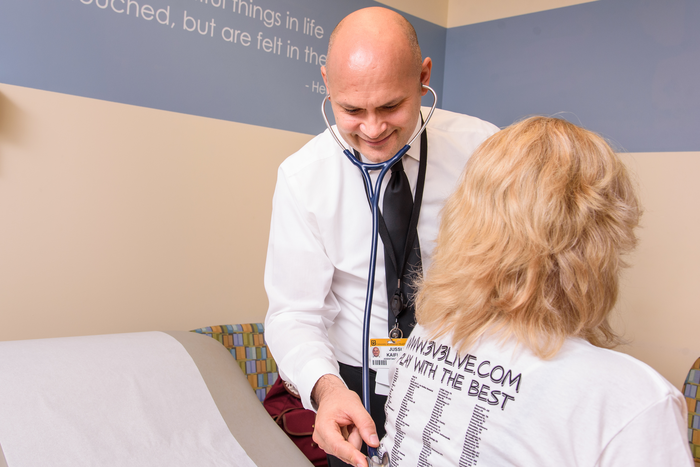Non-small cell lung cancer (NSCLC) is a devastating disease and the leading cause of American cancer deaths. Even patients suitable for tumor removal have a 50% mortality rate. But University of Missouri School of Medicine researchers have identified a process to study the actions and vulnerabilities of circulating tumor cells responsible for cancer recurrence in patients with NSCLC.

Credit: Justin Kelley, MU Health Care
Non-small cell lung cancer (NSCLC) is a devastating disease and the leading cause of American cancer deaths. Even patients suitable for tumor removal have a 50% mortality rate. But University of Missouri School of Medicine researchers have identified a process to study the actions and vulnerabilities of circulating tumor cells responsible for cancer recurrence in patients with NSCLC.
The researchers took tumor fragments from ten human NSCLC patients and injected them into immunodeficient mice. Circulating tumor cells from those mice were identified, isolated and then injected as liquid biopsies into another group of mice to create study models. Researchers watched as two of the ten patient samples of circulating tumor cells became stable tumors in the mouse models.
“These circulating tumor cells have enhanced metastatic potential, and our models showed that these cell clusters correlated with cancer recurrence,” said study author Jussuf Kaifi, MD, a cancer surgeon at MU Health Care and an assistant professor of surgery at the MU School of Medicine. “These findings show our liquid biopsy model can be a valuable tool to study and predict the risk of future recurrences and metastases after curative removal of localized lung cancer in individual patients.”
Kaifi’s team also tested the resistance of these tumor cells to chemotherapy and found a protein coding gene called MYC may be responsible for tumor resistance to a common chemotherapy. By blocking MYC in the mouse models, researchers found the tumor cells to be much more vulnerable to chemotherapy treatment.
“This mouse model generated from the tumors of lung cancer patients offers valuable drug sensitivity testing platforms, possibly in a time window before patients develop incurable recurrence,” Kaifi said.
One other notable finding, researchers discovered the tumors that developed in the mouse model differed from the primary tumors extracted from the human patients. The mouse models had a second set of a specific protein believed to play a role in metastasis development that matched the profile of humans with metastatic lung cancer.
“The finding of a second protein cell population in both the mouse model and patient metastases represents an exciting avenue for future research on circulating tumor cells and metastasis development,” Kaifi said.
In addition to Kaifi, the study authors include MU postdoctoral fellows Kanve Suvilesh, PhD, Yariswamy Manjunath, PhD, and Vijay Radhakrishnan, PhD; Jonathan Mitchem, MD, assistant professor of surgery; Eric Kimchi, MD, the John A. Growden Distinguished Professorship in Surgery; Kevin Staveley-O’Carroll, MD, professor of surgery; Chi-Ren Shyu, PhD, director, MO Informatics Institute; Guangfu Li, PhD, assistant professor of surgery; and Wesley Warren, PhD, professor of genomics.
Their study, “Tumorigenic circulating tumor cells from xenograft mouse models of non-metastatic NSCLC patients reveal distinct single cell heterogeneity and drug responses” was recently published by the journal Molecular Cancer. Research reported in this publication was supported by a Mizzou Advantage Interdisciplinary Research Grant and funding from the Department of Veterans Affairs. The authors of the study declare that they have no conflicts of interest. The content is solely the responsibility of the authors and does not necessarily represent the official views of the funding agencies.
Journal
Molecular Cancer
DOI
10.1186/s12943-022-01553-5
Method of Research
Experimental study
Subject of Research
Animals
Article Title
Tumorigenic circulating tumor cells from xenograft mouse models of non-metastatic NSCLC patients reveal distinct single cell heterogeneity and drug responses
Article Publication Date
12-Mar-2022
COI Statement
The authors of the study declare that they have no conflicts of interest.




